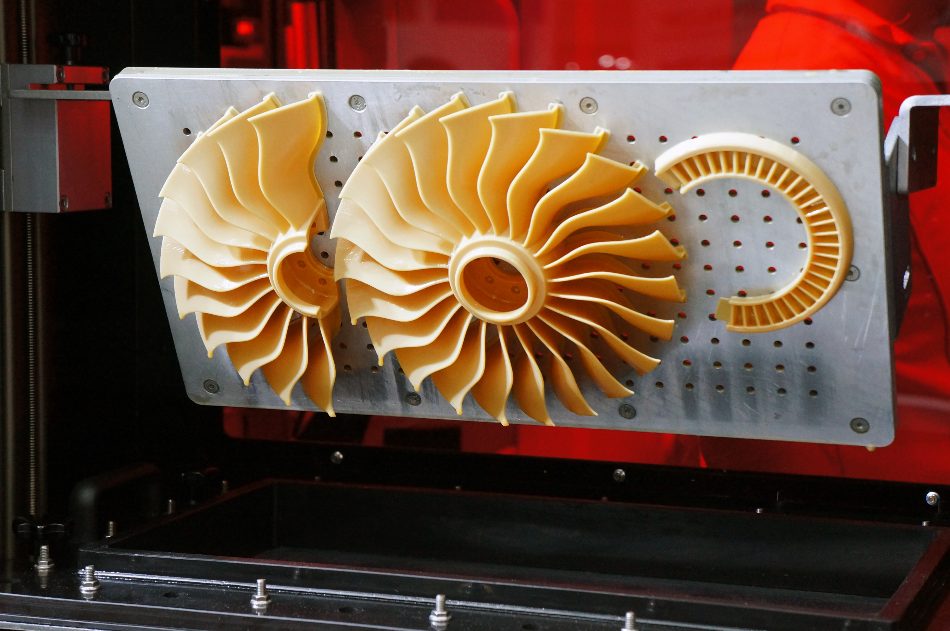
Image Credit: SHINPANU/Shutterstock.com
Additive manufacturing is not only revolutionizing the way industries are manufacturing their products, but it is also opening new avenues of possibility in terms of what can be created and what solutions can be innovated. The aerospace sector is one area in particular that is benefiting from the advances being made in additive manufacturing, with 3D printing changing the way plastic is being used to create components used in aircraft. This development is having a significant impact on the industry.
The Boom in Additive Manufacturing
Since the world’s first-ever 3D printer was created by Chuck Hull in 1983, 3D printing, or additive manufacturing as it has become known, has evolved and found its way into several industries. It has moved past its initial uses as a prototyping tool and has entered the mainstream as a legitimate and innovative tool for creating reliable and safe products in both large and small quantities.
Additive manufacturing is used in a vast array of industries, from automotive, medical, and robotics, to manufacturing, education, and, as this article will explore, aerospace.
Additive Manufacturing in the Aerospace Sector
The process of additive manufacturing is allowing aerospace companies to efficiently design aircraft and its components, as well as opening up the possibilities to solving the industry’s challenges in innovative ways that would not previously have been possible.
The advent of additive manufacturing is changing the way engineers consider the construction of aircraft parts, such as its engines, landing gear, fuselages, and its other myriad of components from large to tiny.
It is predicted that 3D printers will be used to create products across the field of aerospace, from commercial aircraft to NASA satellites. Many big names in the industry have already adopted the technology and have made significant strides forward with the technology. GE has used it to help create jet engines, while Lockheed Martin has added it to its processes to build components for spacecraft, beginning with small brackets and working their way up to bigger, more critical components.
Boeing has recently taken off with a 3D-printed turbine, and Aurora Flight Sciences have utilized the method in producing unmanned aerial vehicles.
Because 3D printing is making it easier, cheaper, and quicker to produce plastic parts, it is encouraging the use of plastic in a wider variety of components in aerospace production where traditionally metals may have been used.
The ability to print small quantities is allowing plastic to be cost-effective for creating replacement components, bringing the cost of using plastic down, as molds no longer need to be used. This is allowing repairs to be done much faster, without needing to order in replacement parts. Components can be printed on-site and in the exact quantity that it is needed. The technology is also allowing planes to be constructed within shorter timeframes, reducing costs.
Examples of How 3D Printing Is Changing Plastic Use in Aircraft
One major aim of the aerospace industry is to reduce the weight of aircraft. This is because heavier crafts use more fuel fly. Therefore, engineers of commercial planes, military aircraft, and spacecraft are all striving to reduce the weight of each component used in their designs to make the vehicles more cost-effective. Plastics and 3D printing are enabling progress in this area.
In 2015, the company Materialise was granted EN9100 and EASA 21G certification for its additive manufactured end-use parts, determining them airworthy and allowing them to partner with Airbus to provide the company with 3D-printed plastic parts. Airbus used these parts on the A350 XWB, which uses 25% less fuel in comparison to its other aircraft thanks to its printed plastic components.
The 328 Group is another example of a company that is changing the status quo in the aerospace industry with 3D-printed parts. The company also recently partnered with Materialise to produce lighter spare parts for aircraft in a more cost-effective and time-effective manner. The company manages the maintenance of the Do328 commuter airliners via this method of printing plastic parts as and when they are needed.
3D-Printed Parts in Deep Space
Commercial aircraft are not the only ones benefiting from 3D printing. Companies involved in producing spacecraft are also adopting the technology. Lockheed Martin has recently used additive manufacturing to create two 3D-printed domes for a high-pressure tank used for carrying fuel on orbiting satellites. The domes were part of a multi-year project to develop a fleet of satellite buses.
Lockheed Martin has stated that they will continue to explore the use of 3D-printed parts in the production of lower-cost satellites. 3D-printed plastics could play a significant part in the future.
Finally, NASA has also incorporated 3D-printed parts into their spacecraft. Also produced by Lockheed Martin, NASA’s Juno spacecraft, which launched in 2016, included 3D-printed support brackets. It is believed that this will be the first of many components to be 3D printed for use in spacecraft destined for deep space missions.
References and Further Reading
3D printing’s impact on aerospace. https://www.aerospacemanufacturinganddesign.com/article/3d-printings-impact-on-aerospace/
Additive Manufacturing Takes Off in Aerospace Industry. Available at: https://www.assemblymag.com/articles/93176-additive-manufacturing-takes-off-in-aerospace-industry
Lockheed Martin extends additive manufacturing to key spacecraft components. Available at: https://spacenews.com/lockheed-martin-extends-additive-manufacturing-to-key-spacecraft-components/
Lockheed Martin Produces its Largest 3D Printed Parts for Space. Available at: https://3dprintingindustry.com/news/lockheed-martin-produces-its-largest-3d-printed-parts-for-space-136207/
Disclaimer: The views expressed here are those of the author expressed in their private capacity and do not necessarily represent the views of AZoM.com Limited T/A AZoNetwork the owner and operator of this website. This disclaimer forms part of the Terms and conditions of use of this website.